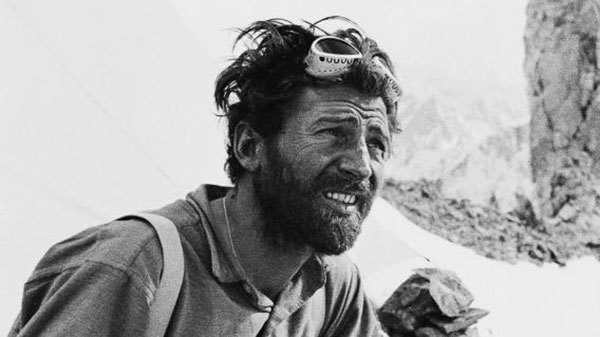Hermann Buhl Soloed Nanga Parbat for First Ascent in 1953

The first ascent of Nanga Parbat was a solo by the legendary Austrian climber Hermann Buhl on July 3, 1953, without bottled oxygen. He wasn’t alone at the start, but his climbing partner, Otto Kempter, turned back, so Buhl continued off alone.
He returned 41 hours later, having barely survived the bold and massive climb to the summit, 6.5 kilometers away from, and 1.2 kilometers higher than camp five. After a calm windless night, he descended the next day without his ice axe, which he inadvertently left on the summit and with only one crampon, reaching high camp at 7 p.m. after a 40-hour climb. Buhl’s route up the Rakhiot Flank or East Ridge has been repeated only once, in 1971 by Ivan Fiala and Michael Orolin.
Buhl was born in Innsbruck and in the 1930s, he began to climb the Austrian Alps. In 1939, he joined the Deutscher Alpenverein (the German Alpine association) and was soon one of the best climbers in Europe. He was also on the mountain rescue team in Innsbruck (Bergrettung Innsbruck). Buhl is considered a pioneer of alpine-style climbing.
Just a few weeks after the successful first ascent of Broad Peak with Fritz Wintersteller and Marcus Schmuck, Buhl and Kurt Diemberger made an attempt on the unclimbed Chogolisa (7,665 m) in alpine style. In a snow storm, Buhl lost his way and walked over a cornice on the southeast ridge, near the summit of Chogolisa II at 7,654 m, also known as Broad Peak. He fell 900 metres down the north face and was never recovered.
Buhl once said, “There is probably nothing finer than to climb free and unencumbered by equipment, reveling in the gymnastic upward movement, like Preuss or a Dulfer before you, relying only upon yourself, keeping a sharp eye on things, feeling the rock beneath your feet and fingertips.”



